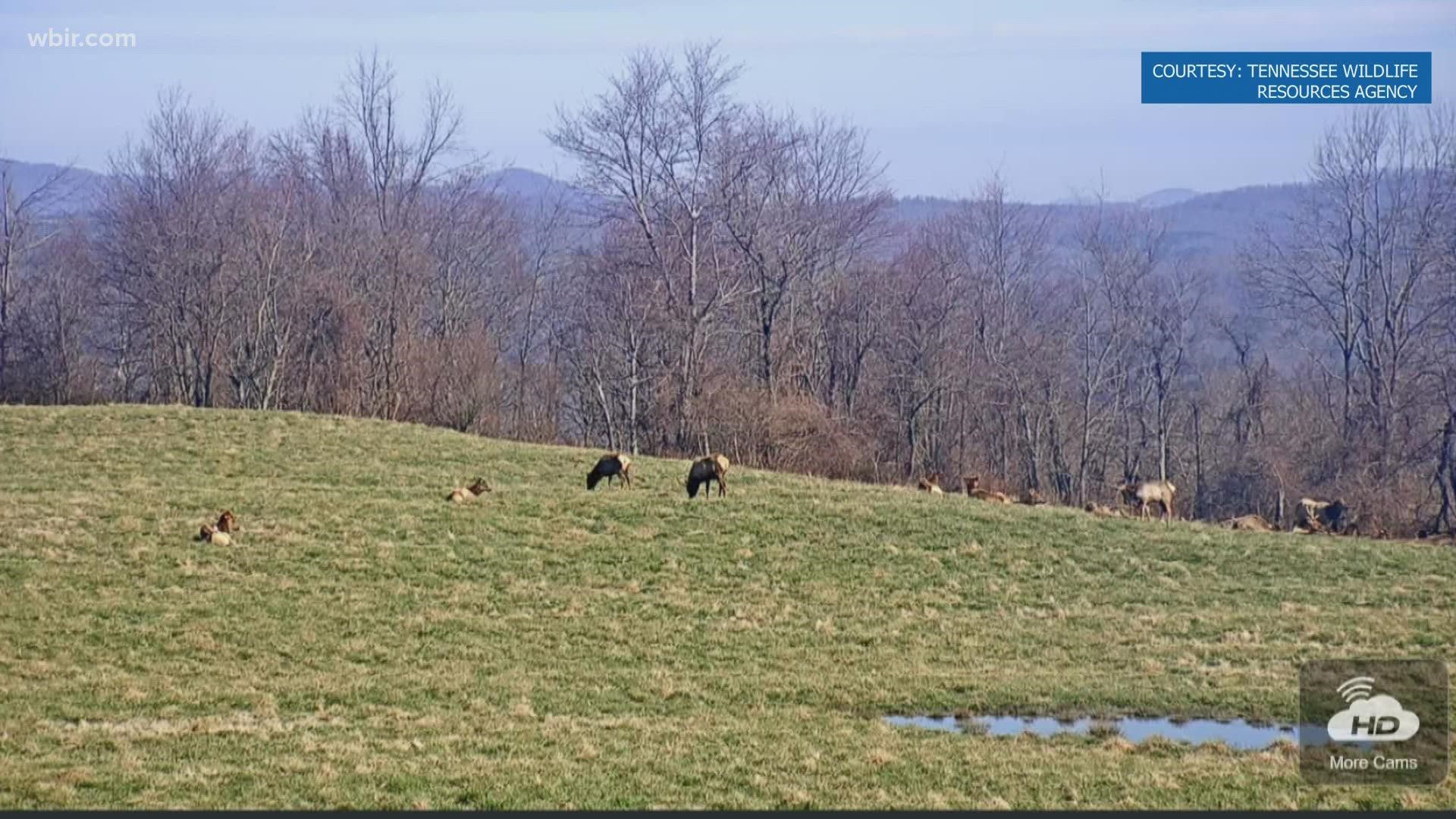LAFOLLETTE, Tenn. — The Tennessee Wildlife Resources Agency is working to preserve the state's elk population, hoping to restore healthy populations and habitats over the course of a decade. The department has also created a livestream showing elk in a field near LaFollette.
The camera is set up in Hatfield Knob, and the department has also taken photos of grazing elk spotted on the camera. They can be seen online.
Elk stand around 5 feet tall and males can weigh up to 1,000 pounds, according to TWRA. They look similar to moose but lack a distinctive overhanging snout and a brown rump.
They are mostly active in the mornings and evenings and tend to travel in groups of more than 25 elk. Males tend to split off from the groups during the summer, according to TWRA. They also said elk tend to eat grass, herbs, twigs and bark while migrating up mountains in the spring.
Groups of elk will travel back down the mountains in the fall, they said.
They said there is no one specific reason for the downfall of elk populations in Tennessee. Instead, they said factors including over-exploitation, private ownership of land and habitat destruction all contributed to a declining population.
To help elk populations continue to thrive, the TWRA created an "Elk Restoration Zone" that stretches across Scott, Anderson, Campbell, Morgan and Claiborne counties. The area is meant to support a herd of up to 2,000 elk, according to the department's strategic plan.
Around 400 elk were set to be released in the zone, with hopes that the population would grow over time. The first few elk were released in December 2000.
The TWRA's Strategic Elk Management Plan summarizes the department's plans to help the elk population survive through 2027. Anyone who wants to see the elk population grow can tune into the TWRA's livestream.

